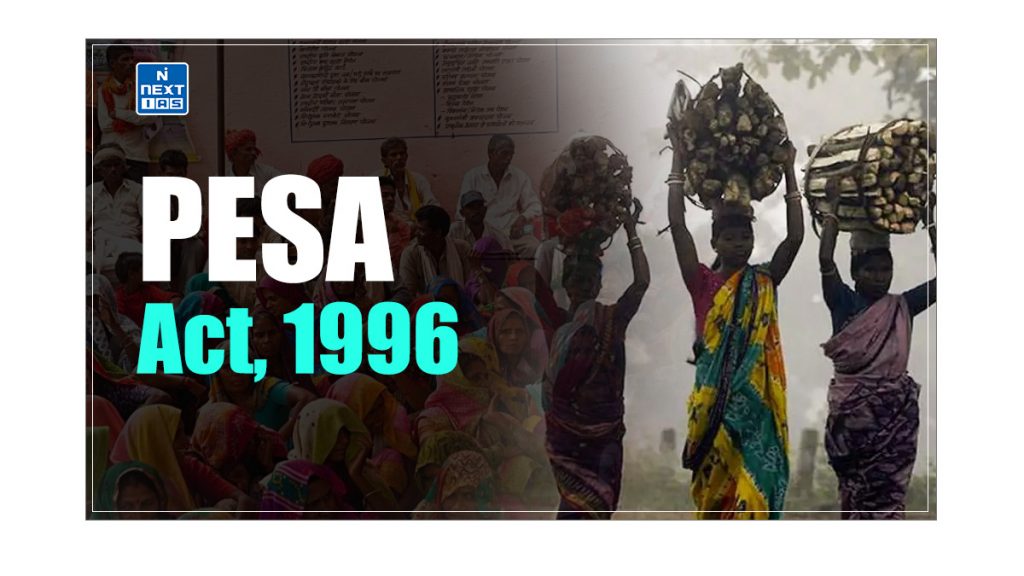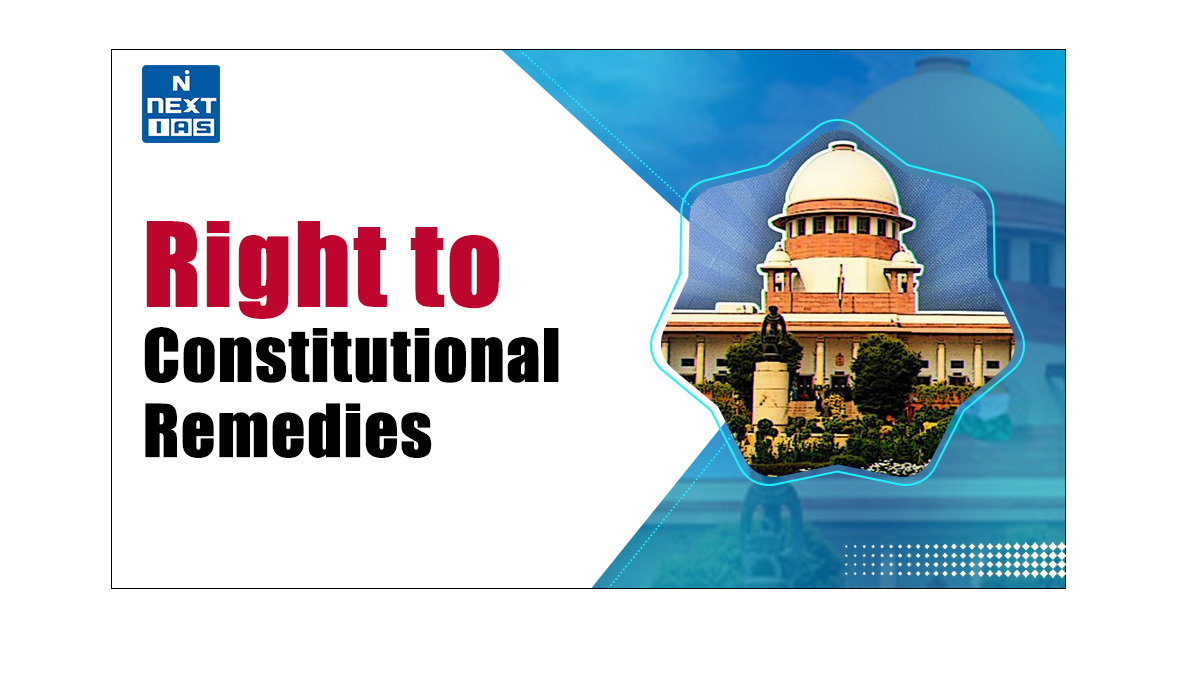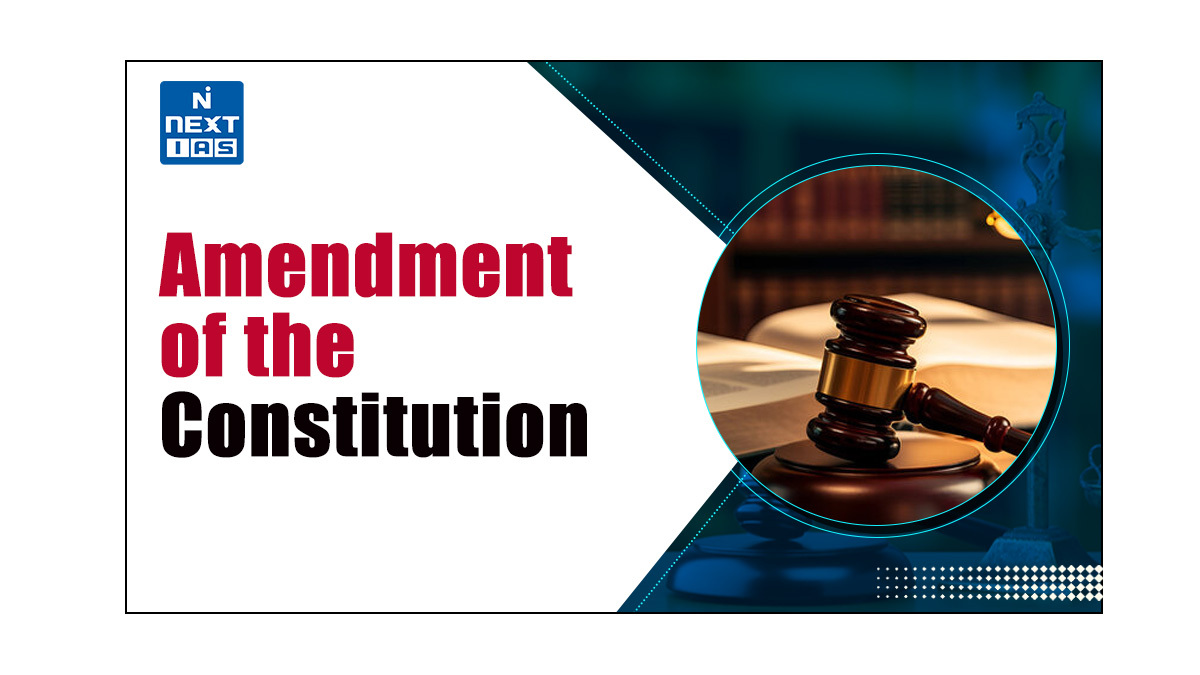
The Provisions of the Panchayats (Extension to Scheduled Areas) Act, 1996, commonly known as the PESA Act or Extension Act, is a landmark legislation aimed at enabling local self-governance in scheduled tribal areas. By enabling the tribal communities to exercise greater control over their local governance, it serves the twin objectives of strengthening the local self-governance in India as well as empowering the tribal communities. This article of NEXT IAS aims to study in detail the PESA Act, its meaning, need, objectives, features, significance, and other related aspects.
What is PESA Act, 1996?
- PESA Act, 1996 stands for the Provisions of the Panchayats (Extension to Scheduled Areas) Act, 1996.
- It is a law enacted by the Parliament to extend the provisions of Part IX of the Constitution relating to the Panchayats to the 5th Scheduled Areas in a slightly modified form.
What is Fifth Schedule (5th Schedule) Area?
- Fifth Schedule (5th Schedule) Areas in India are designated regions within ten states that have a significant tribal population.
- These areas are treated differently from the other areas in the country because they are inhabited by ‘aboriginals’ who are socially and economically rather backward, and special efforts need to be made to improve their condition.
- The Constitution envisages a special system of administration for these areas, and the whole of the normal administrative machinery operating in a state is not extended to these areas.
Need for PESA Act, 1996
- As per the 73rd Constitutional Amendment Act, 1992, the provisions of Part IX of the Indian Constitution relating to the Panchayats are not applicable to the Fifth Schedule areas.
- However, it provides that the Parliament may extend these provisions to these areas, subject to such exceptions and modifications as it may specify.
- It is under this provision that the Parliament enacted the “Provisions of the Panchayats (Extension to the Scheduled Areas) Act”, 1996, popularly known as the PESA Act or the Extension Act.
- This law extends the provisions of Part IX (Panchayats) of the Constitution to the Fifth Schedule Areas, but with certain exceptions and modifications to suit the unique needs and circumstances of the tribal communities in these regions.
- Thus, in essence, the PESA Act bridges the gap between the constitutional provisions for Panchayats and the special status granted to the Fifth Schedule Areas, by extending the Panchayati Raj framework to these regions while also accommodating the traditional rights and governance structures of the tribal populations living in such areas.
Objectives of PESA Act, 1996
The objectives of the PESA Act of 1996 are as follows:
- To extend the provisions of Part IX of the Indian Constitution relating to the Panchayats to the Scheduled areas with certain modifications.
- To provide self-rule for the bulk of the tribal population.
- To have village governance with participatory democracy and to make the Gram Sabha a nucleus of all activities.
- To evolve a suitable administrative framework consistent with traditional practices.
- To safeguard and preserve the traditions and customs of tribal communities.
- To empower Panchayats at the appropriate levels with specific powers conducive to tribal requirements.
- To prevent Panchayats at the higher level from assuming the powers and authority of Panchayats at the lower level of the Gram Sabha.
Applicability of PESA Act, 1996
- The Provisions of the Panchayats (Extension to Scheduled Areas) Act, 1996 (PESA Act) is applicable to the Fifth Schedule (5th Schedule) Areas.
- As of now, the following 10 states have designated Fifth Schedule Areas:
- Andhra Pradesh,
- Telangana,
- Chhattisgarh,
- Gujarat,
- Himachal Pradesh,
- Jharkhand,
- Madhya Pradesh,
- Maharashtra,
- Odisha, and
- Rajasthan.
- Each of these ten states has enacted the necessary compliance legislation by amending their respective Panchayati Raj Acts to align with the provisions and objectives of the PESA Act.
Features of PESA Act, 1996
The features or the provisions of the PESA Act of 1996 are as follows:
- A state legislation on the Panchayats in the Scheduled Areas shall be in consonance with the customary law, social and religious practices, and traditional management practices of community resources.
- A village shall ordinarily consist of a habitation or a group of habitations or a hamlet or a group of hamlets comprising a community and managing its affairs in accordance with traditions and customs.
- Every village shall have a Gram Sabha consisting of persons whose names are included in the electoral rolls for the Panchayat at the village level.
- Every Gram Sabha shall be competent to safeguard and preserve the traditions and customs of the people, their cultural identity, community resources, and the customary mode of dispute resolution.
- Every Gram Sabha shall:
- approve of the plans, programs, and projects for social and economic development before they are taken up for implementation by the Panchayat at the village level, and
- be responsible for the identification of beneficiaries under poverty alleviation and other programs.
- Every Panchayat at the village level shall be required to obtain from the Gram Sabha a certification of utilization of funds for the above plans, programs, and projects.
- The reservation of seats in the Scheduled Areas in every Panchayat shall be in proportion to the population of the communities for whom reservation is sought to be given under Part IX of the Constitution.
- However, the reservation for the Scheduled Tribes shall not be less than one-half of the total number of seats.
- Further, all seats of Chairpersons of Panchayats at all levels shall be reserved for the Scheduled Tribes.
- The State Government may nominate such Scheduled Tribes that have no representation in the Panchayat at the intermediate level or the Panchayat at the district level.
- However, such nomination shall not exceed one-tenth of the total members to be elected in that Panchayat.
- The Gram Sabha or the Panchayats at the appropriate level shall be consulted before making the acquisition of land in the Scheduled Areas for development projects and before resettling or rehabilitating persons affected by such projects in the Scheduled Areas.
- However, the actual planning and implementation of the projects in the Scheduled Areas shall be coordinated at the State level.
- Planning and management of minor water bodies in the Scheduled Areas shall be entrusted to Panchayats at the appropriate level.
- The recommendations of the Gram Sabha or the Panchayats at the appropriate level shall be mandatory for the grant of prospecting license or mining lease for minor minerals in the Scheduled Areas.
- The prior recommendation of the Gram Sabha or the Panchayats at the appropriate level shall be mandatory for the grant of concession for the exploitation of minor minerals by auction.
- While endowing Panchayats in the Scheduled Areas with such powers and authority as may be necessary to enable them to function as institutions of self-government, a State Legislature shall ensure that the Panchayats at the appropriate level and the Gram Sabha are endowed specifically with
- the power to enforce prohibition or to regulate or restrict the sale and consumption of any intoxicant,
- the ownership of minor forest produce,
- the power to prevent alienation of land in the Scheduled Areas and to take appropriate action to restore any unlawfully alienated land of a Scheduled Tribe,
- the power to manage village markets,
- the power to exercise control over money lending to the Scheduled Tribes,
- the power to exercise control over institutions and functionaries in all social sectors,
- the power to control local plans and resources for such plans including tribal sub-plans.
- The State Legislation shall contain safeguards to ensure that Panchayats at the higher level do not assume the powers and authority of any Panchayat at the lower level or of the Gram Sabha.
- The State Legislature shall endeavor to follow the pattern of the Sixth Schedule to the Constitution while designing the administrative arrangements in the Panchayats at district levels in the Scheduled Areas.
- Any provision of any law (relating to Panchayats in the Scheduled Areas) that is inconsistent with the provisions of this Act shall cease to be in force at the expiry of one year from the date on which this Act receives the assent of the President.
- However, all the Panchayats existing immediately before such date shall continue till the expiry of their term unless dissolved by the State Legislature sooner.
Significance of PESA Act, 1996
The Provisions of the Panchayats (Extension to Scheduled Areas) Act, 1996 (PESA Act) holds significant importance for several reasons:
- Empowerment of Tribal Communities – The PESA Act empowers tribal communities by providing them a greater role and say in self-governance.
- Protection of Tribal Culture and Traditions – The PESA Act acknowledges and strives to protect the unique social and cultural practices of tribal communities.
- Control Over Natural Resources – The PESA Act grants tribal communities control over the management and utilization of natural resources within their regions, such as land, water, and forests. This helps in safeguarding their livelihood and preventing exploitation by external entities.
- Land Rights and Preventing Alienation – By requiring that any transfer of land in Scheduled Areas must be approved by the Gram Sabha, the PESA Act provides legal safeguards against the alienation of tribal lands.
- Inclusive and Participatory Governance – By extending Panchayati Raj institutions to Scheduled Areas with specific modifications, the PESA Act promotes inclusive and participatory governance. It ensures that development plans and projects are formulated and implemented with the active participation of tribal communities.
- Decentralized Decision-Making – The PESA Act decentralizes decision-making to the Gram Sabha and Panchayats, enabling more localized and contextually relevant governance. This ensures that decisions reflect the needs and priorities of the tribal population.
- Legal Recognition of Traditional Institutions – The PESA Act provides legal recognition to traditional tribal institutions and customary laws. This integration of traditional governance systems with statutory Panchayati Raj institutions helps to maintain social harmony and effective conflict resolution within the community.
- Addressing Historical Injustices – The PESA Act addresses historical injustices faced by tribal communities, including marginalization, exploitation, and lack of representation. By ensuring their participation in governance and development processes, PESA aims to rectify these past injustices.
- Sustainable Development – By giving control over natural resources to local communities, the PESA Act promotes sustainable development. Tribals, who have lived in harmony with nature for centuries, can manage resources in an environmentally sustainable manner.
- Ensuring Benefits for Tribals – The PESA Act mandates that Gram Sabhas play a crucial role in identifying beneficiaries for various government schemes, ensuring that benefits reach the intended recipients, and addressing issues of corruption and misallocation.
Issues with PESA Act, 1996
The PESA Act, in its present form, has several issues that hamper the realization of the objectives of the Act. Some of the major issues with the PESA Act are as follows:
- Conflicting Laws: PESA can sometimes conflict with other laws like the Forest Rights Act or the Wildlife Protection Act, creating confusion and hindering its implementation.
- Overlapping Jurisdiction: Two different ministries, the Ministry of Panchayati Raj and the Ministry of Tribal Affairs, have overlapping roles in the implementation of PESA. This results in confusion.
- Ambiguous and Unclear Definition: Terms like minor water bodies, minor minerals, manual scavenging, etc. have either not been defined in the Act or are defined ambiguously. This leads to varied interpretations, resulting in loopholes to be exploited.
- Ineffective Punishments: The penalties prescribed for violations of the Act are often seen as insufficient to deter offenders. The low conviction rates for those violating the Act highlight this weakness.
- Limited Coverage: The Act only applies to Scheduled Areas, which are regions with significant tribal populations. Tribal communities outside these areas don’t get the benefits of PESA.
Challenges in Implementation of PESA Act
The Provisions of the Panchayats (Extension to the Scheduled Areas) Act, 1996 (PESA Act) has faced several issues in its implementation. Some of the key challenges include:
- Gaps in Adoption – There are several gaps in the adoption of the PESA Act in letter and spirit by the states. For example:
- Some major tribal states are yet to frame PESA Rules.
- Most of the state legislations have omitted some of the fundamental principles of the PESA Act. For example, customary laws of tribals have been ignored by most of the state laws while framing their acts and rules.
- Bypassing the Act – State authorities use unfair means to bypass the law. For example, the acquisition of land happens under other acts, violating the spirit behind PESA.
- Inadequate Implementation – The government officials, who are responsible for the implementation of the Act, often lack understanding of the Act’s provisions as well as the tribal culture. This leads to inadequate or improper implementation.
- Conflicting Laws and Policies – There are instances where state laws and policies conflict with the provisions of PESA, creating confusion and hindering effective implementation. This is particularly evident in land and resource management, where state policies on land acquisition and resource extraction often clash with the rights granted to tribal communities under PESA.
- Lack of Awareness – Many tribal communities are not fully aware of their rights and powers under the PESA Act, hindering their ability to effectively utilize its provisions.
- Socio-Economic Challenges – High levels of poverty, illiteracy, and poor infrastructure such as lack of roads, communication, and basic services of the tribal communities limit their ability to engage fully with the processes and benefits of the PESA Act.
- Resistance to Decentralisation – There is resistance from local power structures and vested interests that are reluctant to cede control to Gram Sabhas, undermining their authority and effectiveness. Additionally, political interference can obstruct the functioning of Gram Sabhas, affecting their independence and decision-making processes.
- Inadequate Grievance Redressal Mechanisms – Effective mechanisms for resolving disputes and grievances related to the implementation of PESA are often lacking, leaving communities without proper recourse for addressing their concerns.
- Environment and Development Pressures – Large-scale development projects, such as mining and industrial activities, often encroach on tribal lands and resources, leading to displacement and environmental degradation. The Gram Sabha decisions are sometimes overridden in favor of such projects.
Suggested Measures for Effective Implementation of PESA Act
The following steps can be taken for the effective implementation of the PESA Act 1996:
- All the tribal states must frame the PESA rules expeditiously and implement them in letter and spirit.
- The provisions of the Forest Rights Act (2006), the Right to Fair Compensation and Transparency in Land Acquisition, Rehabilitation and Resettlement Act (2013), etc should be converged with the PESA Act in order to avoid conflicts and protect tribal rights/culture.
- The roles of the Ministry of Panchayati Raj and the Ministry of Tribal Affairs should be defined clearly regarding the implementation of the PESA Act. This will help avoid conflicts and confusion.
- There should be a focus on greater social development through health and education initiatives for the capacity building of tribal communities.
- Awareness about the Act should be enhanced through community education of the tribals.
- The grievance redressal mechanisms should be strengthened by putting in place effective systems and legal support.
Conclusion
The PESA Act has the potential to rejuvenate the dying self-governance system in tribal areas. However, the success of the Act hinges on its effective implementation, robust monitoring, and the commitment of both the government and society. By addressing the existing challenges and adopting a holistic approach, India can ensure that the PESA Act fulfils its promise of saving Jal, Jungle, and Jameen of the tribals.
Frequently Asked Questions (FAQs)
How many States are there in PESA Act 1996?
There are a total of 10 states under the PESA Act of 1996.
What is the purpose of the PESA Act 1996?
It is a law enacted by the Parliament to extend the provisions of Part IX of the Constitution relating to the Panchayats to the 5th Scheduled Areas in a slightly modified form.






